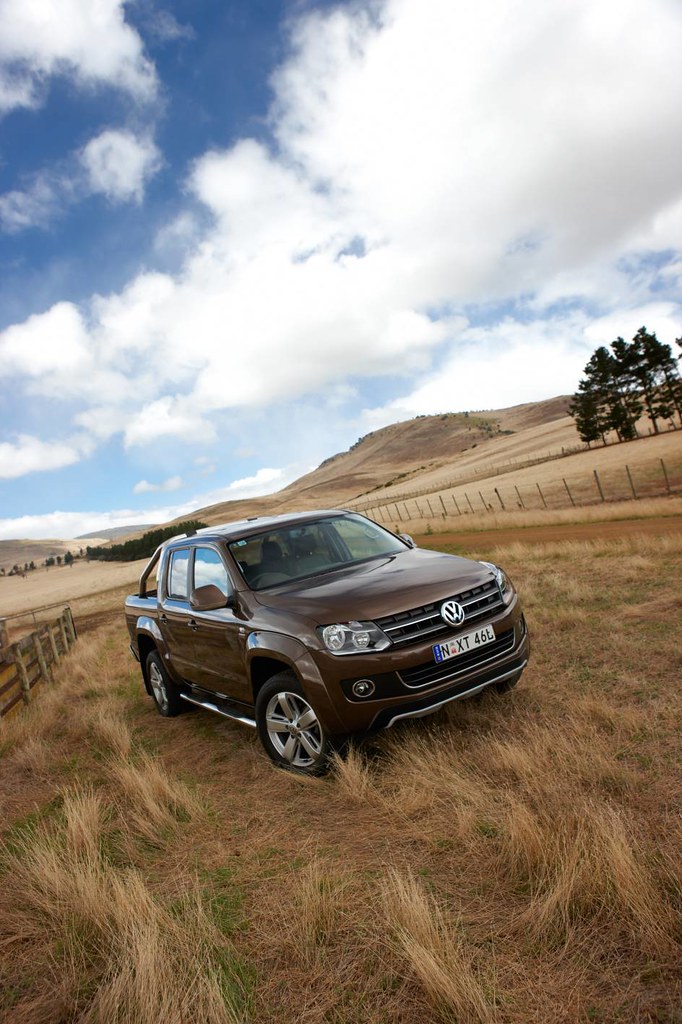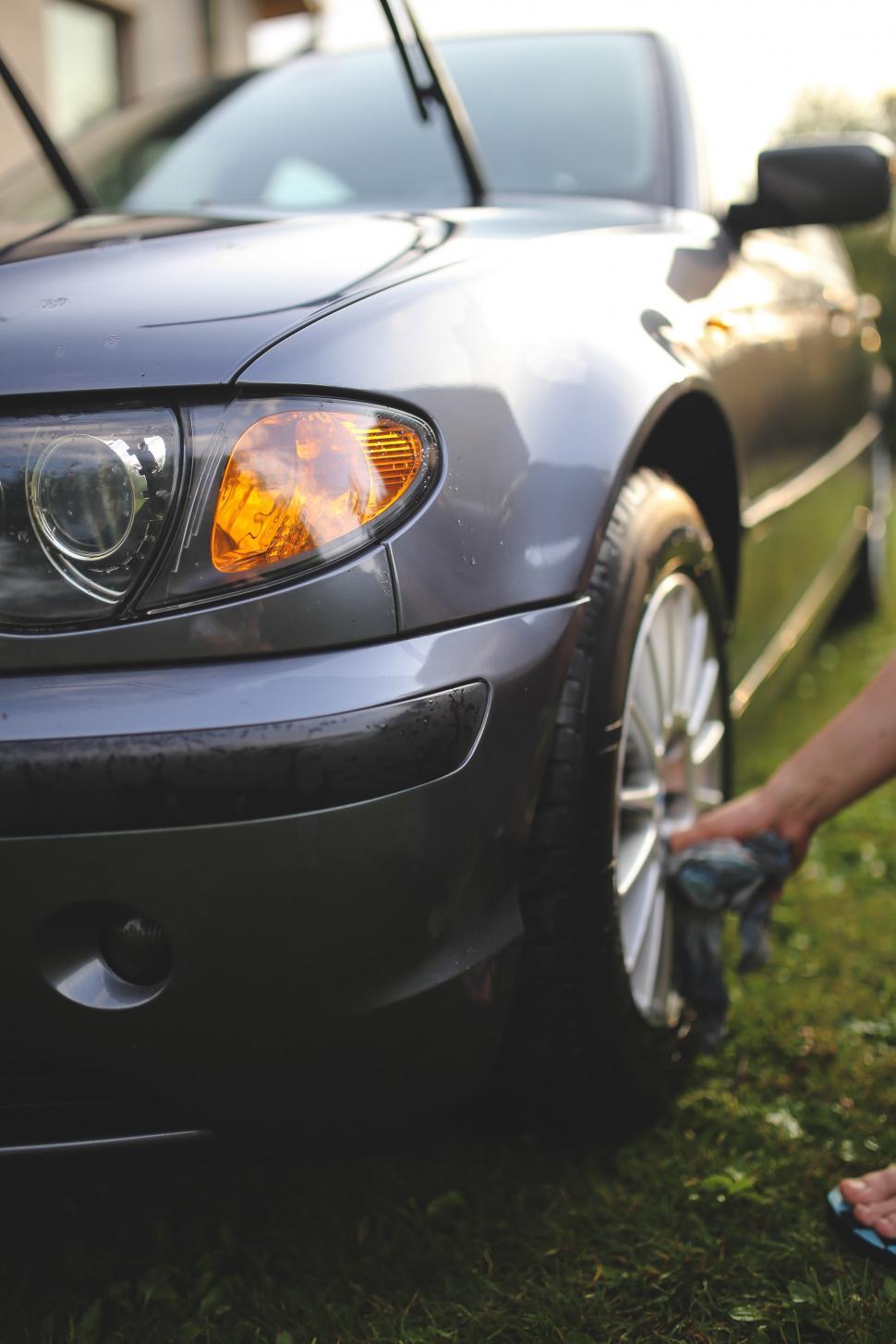
Let’s be honest—car maintenance is a chore nobody looks forward to. Whether you’re juggling a busy work life or simply not into spending your weekends under the hood, the kind of car you drive can make or break your ownership experience. Some cars just get it. They run reliably, demand very little, and cruise past the dealership with a smug grin every few thousand miles. Others? Not so much. They need constant attention—whether it’s oil changes, spark plugs, timing belts, or weird warning lights you’ve Googled a hundred times.
Now, no car is truly maintenance-free, but let’s face it: not all vehicles are built equal when it comes to how often they need TLC. In this in-depth analysis, we’re breaking down a comprehensive list of vehicles that are, well, kinda needy. If you’re thinking of buying a new or used car and don’t want a second job as a part-time mechanic, this list is going to help you decide what’s worth your time—and what’s definitely not.
When purchasing a vehicle, spending your hard-earned money wisely is crucial. It is disheartening to buy a car with the expectation of excellent longevity, only to face unexpected repairs and failures early on. Knowing which cars tend to fail before reaching 60,000 miles can help consumers make informed choices. This article will shine a light on models that experts and owners consistently flag as problem areas, giving you the detailed, analytical insight you need to navigate today’s complex automotive landscape.

1. **BMW 3 Series (especially older models) / BMW X5**
When you hear ‘BMW 3 Series,’ images of sleek design, engaging driving dynamics, and German engineering prowess often come to mind. It’s stylish, fun to drive, and makes you feel like a million bucks—but, as many owners discover, the upkeep is a lot. Owning an older BMW 3 Series is often described as ‘dating someone hot who texts “we need to talk” every other week,’ a telling analogy for the constant attention these vehicles demand.
Among the most prevalent issues are oil leaks from valve covers and oil pans, which are unfortunately common. The cooling systems, critical for engine health, also have a notorious tendency to fail at the worst possible times. Suspension components, designed for a performance-oriented ride, wear out faster than one might expect, requiring more frequent replacements than many competitors.
Even seemingly simple tasks, such as replacing a battery, can spiral into a dealership-only headache due to complex system programming. Beyond the mechanical, owners often grapple with finicky run-flat tires and a frustrating array of random electronic gremlins that can manifest unexpectedly. These vehicles often come with short service intervals, and missing even one can set off a cascading chain of problems.
Adding to the brand’s reliability concerns, the BMW X5 has also been cited for significant braking system failures. This particular issue reminds consumers that higher prices do not necessarily guarantee superior quality or immunity from serious mechanical flaws. Potential buyers should absolutely question the reliability of these luxury brands before committing.
If you’re contemplating a used 3 Series and believe you can sidestep consistent maintenance, think again. The reality is, you’ll likely need a trusted mechanic on speed dial, making the allure of performance a costly endeavor in the long run.
Car Model Information: 2019 Volkswagen Tiguan 2.0T SE 4MOTION
Name: BMW 3 Series
Manufacturer: BMW
Production: 1975–present
Class: Compact executive car
Predecessor: BMW 02 Series
Categories: 1970s cars, 1980s cars, 1990s cars, 2000s cars, 2010s cars
Summary: The BMW 3 series is a line of compact executive cars manufactured by the German automaker BMW since May 1975. It is the successor to the 02 series and has been produced in seven generations.
The first generation of the 3 Series was only available as a 2-door saloon; the model range expanded to include a 4-door saloon, 2-door convertible, 2-door coupé, 5-door estate, 5-door liftback (“Gran Turismo”; discontinued in 2019) and 3-door hatchback body styles. Since 2013, the coupé and convertible models have been marketed as the 4 Series; these styles no longer being included in the 3 Series.
The 3 Series is BMW’s best-selling model line, accounting for around 30% of the BMW brand’s annual total car sales, and has won numerous awards throughout its history. The M version of the 3 series, M3, debuted with the E30 M3 in 1986.
Get more information about: BMW 3 Series
Buying a high-performing used car >>>
Brand: BMW Model: 3 Series
Price: $12,956 Mileage: 115,423 mi.
Read more about: Buyer’s Remorse: 12 Highly Flawed Collector Cars That Mechanics Refuse to Touch
2. **Jeep Wrangler (especially older models) / Jeep Grand Cherokee / Jeep 4xe models**
The Jeep Wrangler is undeniably a beast off-road, a champion in rugged terrains and adventurous exploits. However, the experience of daily driving these iconic vehicles often comes with a significant price tag in terms of ongoing maintenance. Owners frequently find themselves chasing down persistent rattles, unexplained vibrations, and prematurely worn-out suspension bushings, a common occurrence that can test anyone’s patience.
Routine oil changes are typically more frequent, ideally every 5,000 miles, reflecting the vehicle’s design and intended use. The Wrangler’s rough, upright design inherently contributes to parts wearing out faster, a situation only exacerbated if the vehicle is regularly subjected to its natural habitat of off-roading. This rugged charm, while appealing, comes hand-in-hand with an extensive and recurring maintenance checklist.
Older Wranglers, in particular, have earned a notoriety for leaking fluids and rapidly consuming vital components such as ball joints, u-joints, and steering components. Furthermore, the common practice among owners of lifting or modifying their Wranglers—which most do—only increases the frequency and intensity of the attention these vehicles will demand from a mechanic.
Moving to the broader Jeep lineup, the Grand Cherokee has been particularly called out for its electrical problems, which have led to unexpected stalling and often resulted in costly repairs. Both the popular Jeep Wrangler and Jeep Grand Cherokee have taken a significant nosedive in recent years, largely attributed to what experts describe as severe cost-cutting measures from Stellantis, the parent company.
This cost-cutting has led to an engineering philosophy that essentially makes them ‘disposable vehicles,’ suggesting they should be offloaded before their warranty expires. Otherwise, owners are warned to be ‘asking for a never-ending, long-term repair nightmare.’ The Grand Cherokee 4xe and Wrangler 4xe hybrid models have faced several recalls, including a ‘scary one where the engine could shut down while driving,’ and issues with the hybrid battery ‘that could potentially cause a fire.’ Owners also report problems with the drivetrain, electronics, and overall performance, compounded by mechanics struggling to fix these complex hybrid systems.
Car Model Information: 2015 Jeep Wrangler Sahara
Name: Jeep Wrangler
Caption: Jeep Wrangler Unlimited, Sahara edition
Manufacturer: Jeep
Class: Compact SUV
Production: 1986–present
Predecessor: Jeep CJ
Layout: Front-engine, rear-wheel-drive layout,rear-wheel drive
Chassis: Body-on-frame
Related: AIL Storm
Categories: 1980s cars, 1990s cars, 2000s cars, 2010s cars, All-wheel-drive vehicles
Summary: The Jeep Wrangler is a series of compact and mid-size four-wheel drive off-road SUVs manufactured by Jeep since 1986, and currently in its fourth generation. The Wrangler JL, the most recent generation, was unveiled in late 2017 and is produced at Jeep’s Toledo Complex.
The Wrangler is a direct progression from the World War II Jeep, through the CJ (Civilian Jeeps) produced by Willys, Kaiser-Jeep, and American Motors Corporation (AMC) from the mid-1940s through the 1980s. Although neither AMC nor Chrysler (after it purchased AMC in 1987) have claimed that the Wrangler was a direct descendant of the original military model — both the CJ Jeeps and the conceptually consistent Wrangler, with their solid axles and open top, have been called the Jeep model as central to Jeep’s brand identity as the rear-engine 911 is to Porsche.
Similar to the Willys MB and the CJ Jeeps before it, all Wrangler models continue to use a separate body and frame, rigid live axles both front and rear, a tapering nose design with flared fenders, a fold-flat windshield, and can be driven without doors. Also, with few exceptions, they have part-time four-wheel drive systems, with the choice of high and low gearing, and standard open bodies with removable hard or soft tops. However, the Wrangler series was specifically redesigned to be safer and more comfortable on-road, to attract more daily drivers, by upgrading its suspension, drivetrain, and interior, compared to the CJ line. The suspension on all Wranglers included trackbars and anti-roll bars, and, from the 1997 TJ onwards, front and rear coil springs instead of the previous leaf springs.
From 2004 onward, the Wrangler has been complemented with long-wheelbase versions, called Wrangler Unlimited. 2004-2006 models were longer versions with 2 doors. In 2004, only automatic transmission-equipped “Unlimited” versions were sold. In 2005, both an automatic and manual 6-speed (NSG-370) were offered. Since 2007, the long-wheelbase Wranglers were four-door models, offering over 20 in (508 mm) more room. By mid-2017, the four-door models represented three-quarters of all new Wranglers on the market.
Get more information about: Jeep Wrangler
Buying a high-performing used car >>>
Brand: Jeep Model: Wrangler
Price: $10,550 Mileage: 157,089 mi.

3. **Mini Cooper (especially pre-2015 models)**
If you’re searching for a car brimming with personality and a distinctive character, the Mini Cooper undoubtedly delivers in spades. Its unique styling and peppy driving dynamics are highly engaging. However, this vibrant personality often comes with a trade-off: a considerable amount of ‘wrench time’ for its owners, particularly with models manufactured before 2015.
These older Mini Coopers have been consistently plagued by a host of reliability issues that can quickly turn the joy of ownership into a source of frustration. Among the most frequently cited problems are timing chain tensioners that are prone to premature failure, water pumps that unceremoniously quit without warning, and significant carbon buildup in the engine. This carbon buildup often necessitates expensive and intricate clean-outs to maintain proper engine function.
Another substantial concern with these specific Mini models is excessive oil consumption, which requires diligent monitoring and frequent top-offs. Beyond the mechanical ailments, electrical gremlins are also a common occurrence, often choosing to make their appearance just when an owner is feeling a sense of calm and reliability with their vehicle. These electrical issues can be elusive and costly to diagnose and repair.
It’s not that Mini Coopers can’t be fun and spirited rides, but the undeniable truth is that they demand a level of care and attention far exceeding that of your average compact car. If you’re not prepared to be a very involved ‘car parent,’ consistently monitoring and addressing these common issues, then looking elsewhere for a daily driver might be the more pragmatic decision.
Car Model Information: 2019 MINI Countryman Cooper S ALL4
Categories: All set index articles, Articles with short description, Set index articles on cars, Short description is different from Wikidata
Summary: Mini Cooper may refer to:
Performance Cars of the original Mini series with uprated drive train and brakes, called the “Mini Cooper”, made by the British Motor Corporation and also the successors 1961–1971, and 1990–2000
Cars of the Mini (marque), including several different models produced by BMW since 2000 with the “Mini Cooper” title:
Mini Hatch, introduced in early 2000, second generation from 2006, third generation from 2014, and fourth generation from 2024, changing the model name to MINI Cooper.
Mini Clubman (2007–2024)
Mini Countryman
Mini Coupé (2011–2015) and Roadster (2012–2015)
Mini Paceman (2012–2016)
Mini Aceman
Get more information about: Mini Cooper
Buying a high-performing used car >>>
Brand: Mini Model: Cooper
Price: $17,963 Mileage: 66,915 mi.

4. **Range Rover Sport / Land Rover Range Rover / Jaguar F-Pace / Jaguar XE**
Here’s the undeniable truth: Range Rovers look utterly amazing and often drive like a dream, exuding an undeniable sense of luxury and capability. However, their maintenance reputation is, frankly, awful. The entire family of Land Rover and Jaguar vehicles, particularly the Range Rover Sport, Land Rover Range Rover, Jaguar F-Pace, and Jaguar XE, is infamous for a long and persistent list of problems, consistently earning them a reputation for being ‘unreliable rolling disasters.’
Common issues that plague these luxury SUVs and sedans include recurring air suspension failures, notoriously unreliable electronics that seem to have a mind of their own, and a constant barrage of unexpected warning lights illuminating the dashboard. Owning one of these vehicles often means you’re either en route to the mechanic or have recently departed from one, highlighting a cycle of continuous repair. Even basic maintenance, such as oil changes, comes with short intervals and costs significantly more than one might anticipate.
Beyond these general concerns, specific models encounter their own array of troubles. Range Rovers are frequently cited for transmission issues, leaky differentials, and a tendency for various sensors to ‘throw tantrums,’ causing widespread diagnostic headaches. The Jaguar XE has faced persistent problems with ‘misty windows and faulty fuel systems,’ detracting from the luxury experience. Meanwhile, the Jaguar F-Pace battles ‘serious engine trouble, leaks galore, clunky transmissions, finicky fuel systems, and electronics that play by their own rules.’
The ongoing battle against these issues can feel like a relentless game of ‘whack-a-mole,’ where resolving one problem only leads to the emergence of another shortly thereafter. This is not merely an isolated Jaguar problem, as many European luxury brands, including BMW and Audi, share similar reliability woes. However, experts like Shari Prymak suggest that ‘Jaguar and Land Rover seem to be in a league of their own when it comes to leaving owners stranded,’ making their luxury appeal a fiscally risky proposition for long-term ownership.
Car Model Information: 2019 Volkswagen Tiguan 2.0T SE 4MOTION
Name: Range Rover Sport
Assembly: Solihull plant
Designer: Gerry McGovern
Manufacturer: Land Rover Ltd.,Jaguar Land Rover
Production: 2005–present
Class: Executive car,SUV
BodyStyle: SUV
Layout: Front-engine, four-wheel-drive
Successor: Range Rover (L460)
Categories: 2010s cars, 2020s cars, All-wheel-drive vehicles, All Wikipedia articles written in British English, All articles needing additional references
Summary: The Land Rover Range Rover Sport is a mid-size luxury SUV produced by the British manufacturer Land Rover, part of Jaguar Land Rover. Introduced in 2005 with the first-generation L320 model, it was succeeded by the second-generation L494 in 2013, and the third-generation L461 in 2022.
Get more information about: Range Rover Sport
Buying a high-performing used car >>>
Brand: Land Rover Model: Range Rover Sport
Price: $12,956 Mileage: 115,423 mi.
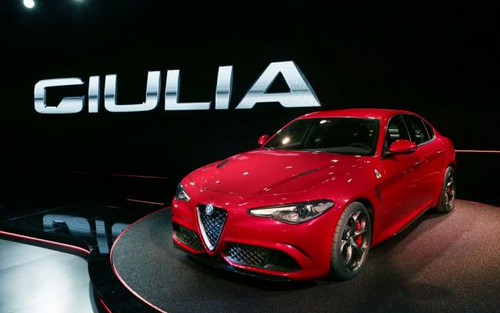
5. **Alfa Romeo Giulia / Maserati Grecale**
The Alfa Romeo Giulia is a vehicle that commands attention. It’s undeniably gorgeous, thrillingly fast, and handles with an engaging precision that dreams are made of. However, beneath this captivating exterior lies a reality: the Giulia is not for the faint of heart when it comes to ownership. This Italian masterpiece demands frequent and vigilant attention, making it a challenging proposition for those seeking a low-maintenance daily driver.
The engine, a true gem in terms of performance, requires frequent oil changes, ideally every 5,000 miles, to ensure its longevity and peak operation. Beyond routine servicing, owners have frequently reported transmission hiccups and a variety of electronic glitches that can be both frustrating and costly to resolve. Infotainment system bugs, unexpected sensor failures, and peculiar noises emanating from the suspension system are all considered part of the ‘Giulia ownership experience,’ rather than isolated incidents.
Adding to the challenge, Alfa Romeo’s dealer network in the U.S. is not as robust or widespread as some other brands, which can complicate the process of finding specialized parts and reliable service. Furthermore, and perhaps most critically, reliability has historically not been Alfa Romeo’s strongest suit, a reputation that continues to factor into the ownership equation for modern models.
The Maserati Grecale presents a similar narrative of concern. Described as ‘another Stellantis failure,’ it’s perhaps no surprise, given that it is largely based on the aforementioned Alfa Romeo Giulia and shares many of the same parts found in problem-mired Dodge and Jeep models. This shared DNA translates into shared reliability vulnerabilities, particularly electrical and computer-related issues, which often begin ‘within weeks of ownership’ for Dodge Hornet models that share components.
Experts note that it’s ‘no wonder why Maserati became next to worthless after a few years,’ as few are willing to take on their inherent maintenance burdens. The cost of parts and labor required to service them often outweighs their residual value, making them economically impractical for long-term ownership. If you’re drawn to the Giulia or Grecale, it’s imperative to ‘go in with your eyes wide open’ and be prepared to meticulously monitor everything from battery drain to brake squeal, making a commitment to constant vigilance.
Car Model Information: 2019 Volkswagen Tiguan 2.0T SE 4MOTION
Name: Alfa Romeo Giulia (Type 105)
Caption: Alfa Romeo Giulia Super
Manufacturer: Alfa Romeo
Production: 1962–1978
Assembly: Portello (district of Milan),Alfa Romeo Portello Plant,Milan
Designer: Giuseppe Scarnati
Class: Compact executive car
BodyStyle: notchback,Sedan (car)
Layout: Front-engine, rear-wheel-drive layout
Related: Alfa Romeo 105/115 Series Coupés,Alfa Romeo 1750 Berlina,Alfa Romeo Gran Sport Quattroruote,Alfa Romeo Spider
Engine: Alfa Romeo Twin Cam engine,1.6 L Twin Cam I4 (petrol),Perkins Engines
Transmission: Manual transmission
Wheelbase: 2510 mm
Abbr: on
Length: 4140 mm
Width: 1560 mm
Height: 1430 mm
Weight: convert
Predecessor: Alfa Romeo Giulietta (750/101)
Successor: Alfa Romeo Giulietta (116)
Sp: uk
Categories: 1970s cars, Alfa Romeo vehicles, Articles with short description, CS1 Italian-language sources (it), Cars introduced in 1962
Summary: Alfa Romeo Giulia (Italian pronunciation: [ˈdʒuːlja]) is the name of three not directly related model (line)s from Italian carmaker Alfa Romeo. The first were the four-door Type 105 entry-level compact executive sports sedans produced from 1962 to 1978; the second are the updated (mainly up-engined) Spider, Sprint, and Sprint Speciale Alfa Giuliettas, and in 2015, Alfa Romeo revived the Giulia name, again for a compact executive car (type 952).
Alfa Romeo was one of the first mainstream manufacturers to put a powerful engine in a light-weight 1 tonne (2,205 lb) four-door car for mass production. The Type 105 Giulia was equipped with a light alloy twin overhead camshaft four-cylinder engine similar to that of the earlier Giulietta (750/101) range, available in 1.3-litre (1,290 cc) and 1.6-litre (1,570 cc) versions. Various configurations of carburetors and tuning produced power outputs from about 80 to about 110 bhp (55 to 75 kW), coupled in most cases to 5-speed manual transmission.
Giulia sedans were noted for lively handling and impressive acceleration among small European four-door sedans of their era, especially considering modest engine sizes offered. The popular Super version with the twin carburettor 1.6 litre engine had a top speed of 170 km/h (106 mph) and accelerated from 0 to 100 km/h (62 mph) in about 12 seconds, better than many sports cars of the late 1960s and early 1970s. When leaving the factory all variations of the Giulia originally fitted either Pirelli Cinturato 165HR14 or 155HR15 tyres (CA67).
The styling of the three-box four-door sedan was somewhat wanting, with its three main volumes all truly square and boxy, softened only by detailing of the front and bonnet, roofline, and boot. Using a wind tunnel during development helped designers to find a remarkably aerodynamic shape with a drag coefficient of Cd=0.34, particularly low for a saloon of the era.
The Giulia Spider was succeeded by the Alfa Romeo Spider (105/115) in 1966.
Get more information about: Alfa Romeo Giulia
Buying a high-performing used car >>>
Brand: Alfa Romeo Model: Giulia
Price: $12,956 Mileage: 115,423 mi.
Read more about: Who Crafts the Soul of the Trident? A Deep Dive into Maserati’s Engine Evolution Beyond Ferrari
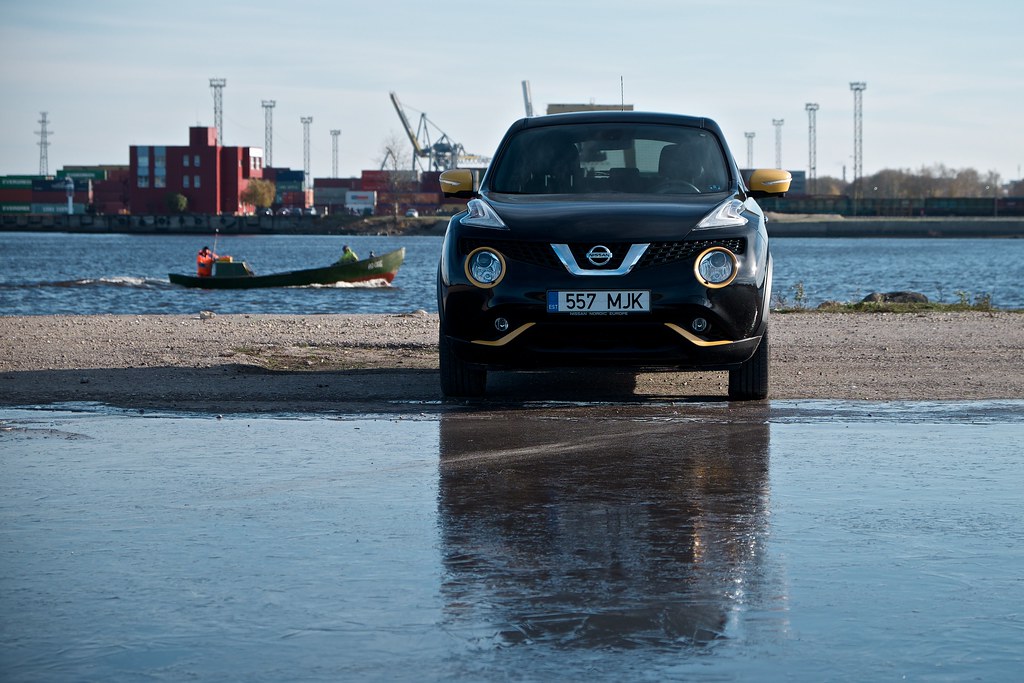
6. **Nissan Juke (2011 model) / Nissan Rogue / Infiniti QX50**
Nissan, unfortunately, has been on what experts describe as a ‘devastating cost-cutting pathway for years now,’ a trajectory that has significantly impacted the company’s reputation for reliability. This approach has led to a noticeable decline in the build quality and longevity of several of its models, particularly when they reach higher mileage thresholds.
The 2011 Nissan Juke stands out as an early example of these reliability concerns. This particular model faced significant issues with its timing chains and turbo failures, problems that frequently caused many vehicles to ‘fail before reaching the benchmark of 60,000 miles.’ After years of poor sales, Nissan ultimately discontinued the Juke, making way for the more reliable Nissan Kicks, a clear acknowledgment of its predecessor’s shortcomings.
More recently, the Nissan Rogue has emerged as a significant area of concern. The primary problem with this vehicle centers on its ‘turbocharged three-cylinder engine that has very complex technology,’ which is disturbingly ‘prone to internal bearing damage, knocking noises, and potential engine seizing, which could cause the entire engine to fail.’ Experts like Garner Ted warn that Nissan is currently ‘under investigation for engine failures in the Rogue model and others,’ an alarming development.
Adding to the Rogue’s woes is its reliance on a continuously variable transmission (CVT), which Nissan is ‘famous for having problems with.’ These CVTs, often manufactured by JATCO, have a ‘bit of a reputation for wearing out early’ and are ‘not exactly known for being re-buildable,’ leading to costly replacements. This combination of engine vulnerability and transmission issues makes the Rogue a high-risk proposition for long-term ownership.
The Infiniti QX50, sharing a considerable amount of its engineering ‘DNA with its cousin, the Nissan Rogue,’ is similarly impacted. Both vehicles utilize the same 2.0L turbocharged 4-cylinder engine, which features ‘fancy variable compression technology,’ and both rely on a continuously variable transmission. This shared architecture means the QX50 is susceptible to many of the same engine and transmission issues that plague the Rogue, amplifying the brand’s overall reliability challenges.
Car Model Information: 2015 Nissan Juke SV
Name: Nissan Juke
Caption: Nissan Juke (F16)
Manufacturer: Nissan
Production: 2010–present
Class: Subcompact crossover SUV
BodyStyle: Sport utility vehicle
Layout: Front-engine, front-wheel-drive layout,Front-engine, four-wheel-drive layout
Categories: 2020s cars, All-wheel-drive vehicles, All Wikipedia articles written in British English, All articles with unsourced statements, Articles containing Japanese-language text
Summary: The Nissan Juke (Japanese: 日産・ジューク, Hepburn: Nissan Jūku) is a subcompact crossover SUV (B-segment) produced by the Japanese car manufacturer Nissan since 2010. Debuted as a production vehicle at the 2010 Geneva Motor Show in March, it was introduced to North America at the 2010 New York International Auto Show to be sold for the 2011 model year as the smallest crossover in Nissan’s lineup prior to the introduction of the Nissan Magnite in 2020.
The second-generation model was revealed for the European market in September 2019, offering larger dimensions by utilising the newer Renault–Nissan CMF-B platform. The second generation marks the withdrawal of the model from most markets outside Europe and Australasia to make way for the Nissan Kicks.
The name “juke” means to “dance or change directions demonstrating agility”, and is also derived from the word “jukebox”.
Get more information about: Nissan Juke
Buying a high-performing used car >>>
Brand: Nissan Model: Juke
Price: $9,998 Mileage: 59,742 mi.

7. **Hyundai/Kia (with GDI Nu or Theta 2.0L, 2.4L 4-cylinder engines)**
For prospective car buyers, a particularly urgent warning has been issued regarding certain Hyundai and Kia models, specifically those equipped with the GDI Nu or Theta 2L and 2.4L 4-cylinder engines. These particular powerplants have, over the past decade, garnered a notoriously ‘rough reputation’ within the automotive industry, consistently ranking among the ‘most failure-prone engines.’
These troublesome engines were predominantly used on Hyundai and Kia models manufactured between 2011 and 2022. Alarmingly, the 2L engine continues to be utilized in some newer models, such as the Hyundai Kona and the Kia Soul. This broad application means a significant number of vehicles on the road, both old and new, could be susceptible to these inherent design flaws, making it crucial for buyers to verify engine specifications.
Owners of vehicles with these engines have reported a litany of serious problems. These include excessive oil consumption, persistent engine knocking, unexpected stalling, and even the alarming prospect of engine fires. Ultimately, these issues can, and often do, culminate in complete engine failure, leaving owners stranded with substantial repair bills or even a ‘worthless pile of metal,’ as one expert starkly puts it.
Given the severity and widespread nature of these problems, millions of vehicles fitted with these specific engines have been subject to extensive recalls. The situation has also led to numerous class-action lawsuits, with Kia and Hyundai ‘shelling out tons of cash in fines and lawsuits’ to address the catastrophic failures. These legal and financial repercussions underscore the depth of the reliability crisis associated with these engines.
Despite the widespread attention and efforts to mitigate these issues, it remains ‘unclear if these problems were completely fixed in brand-new models.’ This ongoing uncertainty leaves a significant cloud over the long-term prospects of any Hyundai or Kia vehicle equipped with these engine variants, making thorough research and caution absolutely paramount for any potential buyer.
Continuing our deep dive into the automotive landscape, we turn our attention to seven more vehicles that often transform into money pits well before their odometer ticks over 60,000 miles. These models, spanning various segments from family haulers to innovative electric vehicles, come loaded with critical vulnerabilities in their engine, transmission, and electrical systems, making them financially challenging choices for any driver seeking long-term ownership. Our detailed analysis, drawing on expert opinions and reported issues, aims to arm you with the knowledge needed to steer clear of these notorious service bay staples.

8. **Dodge Hornet**
The Dodge Hornet, a relatively new entry to the market, quickly revealed itself as another product susceptible to the widespread cost-cutting measures impacting its parent company, Stellantis. Described by some experts as essentially a rebadged Alfa Romeo, its shared DNA with other problem-mired Dodge and Jeep models suggests an inherent vulnerability to similar reliability issues, despite its fresh face. This lineage means that the allure of a new model can quickly fade into a familiar pattern of frustration for owners.
Indeed, even in its short time on the market, the Hornet has already amassed a concerning record, with nearly 70 technical service bulletins and 10 recalls. This rapid accumulation of issues is a red flag, indicating systemic problems rather than isolated incidents. The sheer volume of these alerts underscores a vehicle that struggles with foundational quality control, particularly in critical areas that dictate a car’s day-to-day usability.
Alarmingly, most of the reported problems are electrical and computer-related, often manifesting within weeks of ownership. These aren’t minor inconveniences; modern vehicles rely heavily on complex electronic systems, and early failures here can lead to a cascade of expensive and elusive diagnostic challenges. For prospective owners, investing in a Hornet means going in with eyes wide open to the likelihood of constant vigilance and frequent, costly repairs, potentially well before the warranty period offers any meaningful protection.
Car Model Information: 2024 Dodge Hornet GT
Alt: Front left view of a blue American compact crossover SUV built in Italy
Name: Dodge Hornet
Manufacturer: Stellantis Europe
Production: August 2022 – present (production has been indefinitely suspended)
ModelYears: 2023–present
Assembly: Pomigliano d’Arco
Caption: 2023 Dodge Hornet GT
Class: Compact crossover SUV
BodyStyle: SUV
Layout: Front-engine, four-wheel-drive layout
Platform: SCCS platform#Small Wide 4×4 LWB
Aka: Alfa Romeo Tonale
Related: Alfa Romeo Tonale
Engine: ubl
ElectricRange: cvt
Transmission: ubl
Drivetrain: ubl
Motor: Dual electric motors
Battery: ubl
Wheelbase: 2636 mm
Abbr: on
Length: 4521 mm
Width: 1840 mm
Height: 1620 mm
Weight: convert
Designer: Jeff Gale
Categories: 2020s cars, All Wikipedia articles in need of updating, Articles with short description, Cars introduced in 2022, Commons category link from Wikidata
Summary: The Dodge Hornet is a five-door, five passenger, all-wheel drive compact crossover SUV marketed by Dodge beginning with model year 2023. It is the brand’s smallest vehicle — marketed exclusively in North America and manufactured in Italy as a rebadged variant of the Alfa Romeo Tonale.
Get more information about: Dodge Hornet
Buying a high-performing used car >>>
Brand: Dodge Model: Hornet
Price: $28,995 Mileage: 236 mi.
Read more about: Beyond the Commute: 14 Cars That Redefine Driving Fun and Handling Perfection for Enthusiasts

9. **GMC Silverado and Sierra**
For years, GM’s trucks and SUVs, including the Chevrolet Silverado and GMC Sierra, built a reputation as tough, reliable companions, revered by owners for their dependable service. However, a significant shift occurred around 15 years ago with the introduction of cylinder deactivation technology in their EcoTec 3.5L, 5.3L, and 6.2L V8 engines. While designed to boost fuel efficiency, this sophisticated engineering decision appears to have inadvertently introduced a series of severe and persistent reliability concerns.
The core problem lies with the valve lifters in these engines, which have a notorious tendency to stick or collapse prematurely. This critical mechanical failure often manifests as disconcerting engine noises, including ticking, knocking, or even a complete shutdown of the engine, rendering the truck a ‘giant paperweight.’ The widespread nature and severity of this flaw have not gone unnoticed, leading to class-action lawsuits against GM, underscoring the depth of this mechanical crisis.
These lifter issues are not confined solely to the Silverado and Sierra; they extend across a broader range of GM SUVs, including the Tahoe, Suburban, Yukon, and Escalade, impacting a significant portion of the brand’s V8-equipped lineup. While many of these engines are reportedly replaced under warranty, this constant stream of failures significantly undermines consumer confidence and makes obtaining reliable service from these vehicles past their warranty period a considerable gamble.
Car Model Information: 2024 Chevrolet Silverado 3500 High Country
Name: Chevrolet Silverado/GMC Sierra
Caption: 2022 Silverado 2500HD High Country
Manufacturer: General Motors
Aka: unbulleted list
Production: 1998–present
Assembly: unbulleted list
Class: unbulleted list
BodyStyle: unbulleted list
Layout: unbulleted list
Predecessor: unbulleted list
Categories: 2000s cars, 2010s cars, 2020s cars, All-wheel-drive vehicles, All Wikipedia articles written in American English
Summary: The Chevrolet Silverado is a range of trucks manufactured by General Motors under the Chevrolet brand. Introduced for the 1999 model year, the Silverado is the successor to the long-running Chevrolet C/K model line. Taking its name from the top trim level from the Chevrolet C/K series, the Silverado is offered as a series of full-size pickup trucks, chassis cab trucks, and medium-duty trucks. The fourth generation of the model line was introduced for the 2019 model year.
The Chevrolet Silverado shares mechanical commonality with the identically related GMC Sierra; GMC ended the use of the C/K nomenclature a model generation prior to Chevrolet. In Mexico, high-trim level versions of the Silverado use the Chevrolet Cheyenne name (not to be confused with the 2003 concept). Competing against the Ford F-Series, Ram pickup, Toyota Tundra, and Nissan Titan, the Silverado is among the best-selling vehicles in the United States, having sold over 12 million trucks since its introduction in 1998 as a 1999 model year.
Get more information about: Chevrolet Silverado
Buying a high-performing used car >>>
Brand: Chevrolet Model: Silverado
Price: $72,988 Mileage: 44,054 mi.
Read more about: From Workhorse to Dream Machine: 10 Pickup Trucks Owners Absolutely Love—or Desperately Regret
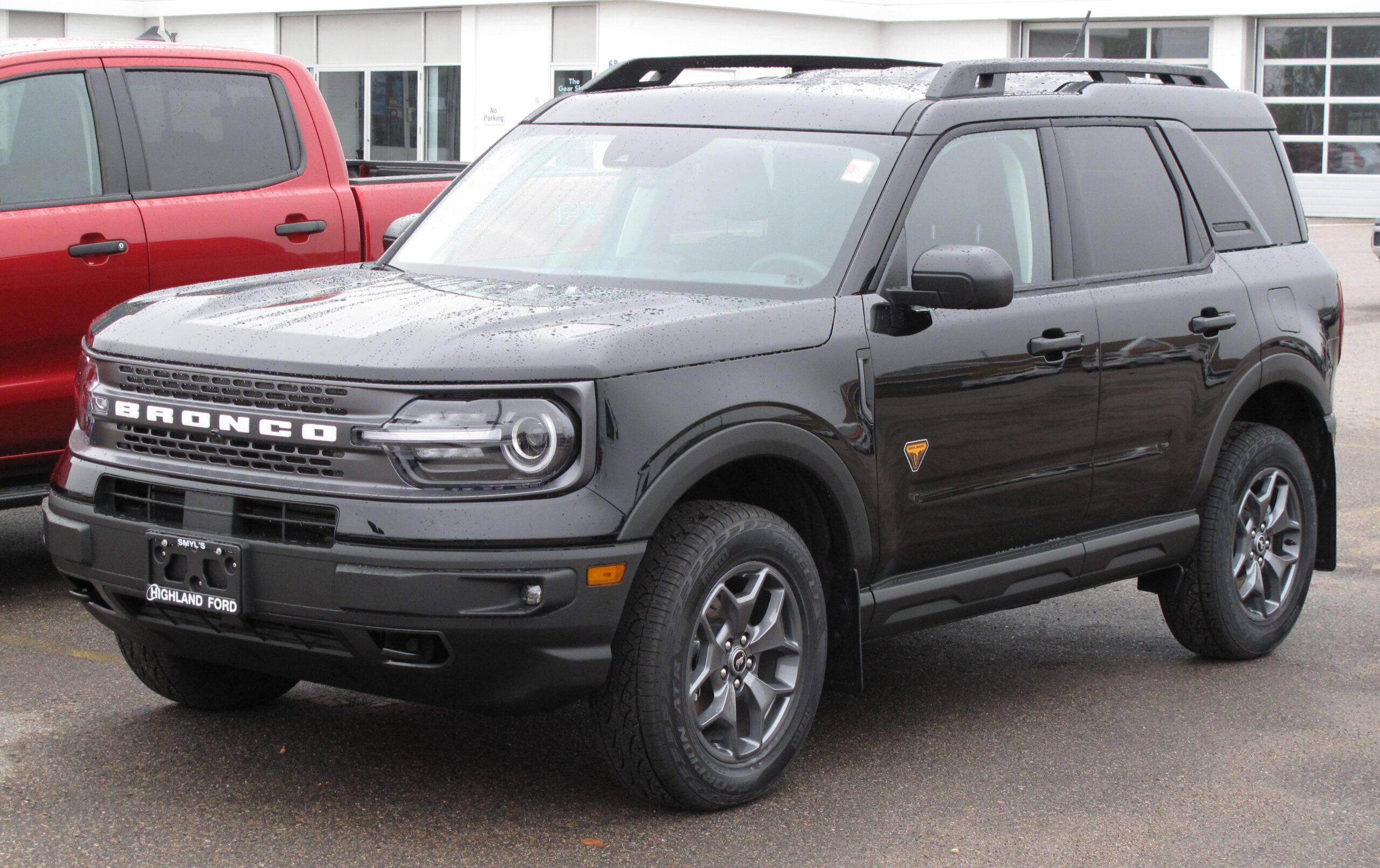
10. **Ford Bronco Sport**
Ford’s EcoBoost engines, while innovative, have garnered a “rough reputation” within the automotive community, and unfortunately, the 1.5L 3-cylinder EcoBoost powering the Bronco Sport and Escape models is no exception. This particular engine, designed to deliver efficiency in a compact package, has been at the center of a host of alarming reliability concerns that can quickly escalate into serious safety risks and costly repairs for owners.
The Bronco Sport’s EcoBoost engine has been subject to recalls for faulty fuel injectors, a critical flaw that poses a risk of sparking an engine fire. Beyond this severe safety concern, owners have consistently reported issues such as engine overheating, potential turbocharger failures, cooling system leaks, and even widespread head gasket problems. This combination of mechanical ailments points to fundamental design weaknesses that plague the engine from multiple angles.
Experts, including Prymak, express a lack of enthusiasm for these “tiny 3-cylinder engines,” noting that they often operate under significant strain to maintain performance, which inevitably leads to premature wear and reliability issues in the long run. The fact that Ford has been actively replacing these engines under warranty, while a necessary measure, does little to instill confidence in anyone considering a long-term commitment to the Bronco Sport, suggesting it is a vehicle that may require substantial attention before the 60,000-mile mark.
Read more about: Mastering Your Ride: A Comprehensive Guide to Selecting the Perfect Wheel and Tire Combination for Optimal Performance and Safety

11. **Chrysler Pacifica Plug-in Hybrid**
While the conventional Chrysler Pacifica is often regarded as a solid choice for families, its Plug-in Hybrid variant tells a starkly different story. Like many vehicles stemming from the Stellantis umbrella, the Pacifica Hybrid has been consistently ‘dogged by reliability problems’ that cast a long shadow over its long-term viability, particularly regarding its complex hybrid system and critical safety components.
This minivan has been subjected to multiple recalls, specifically addressing various serious issues within its hybrid system. Owners have reported deeply concerning problems, including unexpected engine shutdowns and a range of electronic malfunctions that can leave drivers stranded or without essential vehicle functions. Perhaps most critically, the hybrid system has been linked to ‘fire risks related to its hybrid system,’ a severe safety concern that demands immediate attention and undermines consumer trust.
These issues are not theoretical; they have been well-documented, with Chrysler issuing numerous recalls due to fire risks originating from defects in the high-voltage battery pack, even when the vehicle is parked and turned off. Reinforcing these concerns, Consumer Reports recently delivered a scathing assessment, ranking the Pacifica Hybrid as the ‘absolute least reliable car you could buy.’ For a family-oriented vehicle, such significant reliability and safety liabilities make it a questionable investment for lasting peace of mind.
Car Model Information: 2021 Chrysler Pacifica Touring-L
Categories: All set index articles, Articles with short description, Chrysler vehicles, Set index articles on cars, Short description is different from Wikidata
Summary: Chrysler Pacifica is a nameplate used by Chrysler for a variety of vehicles.
The name was first used on a luxury minivan concept vehicle in 1999, and later a crossover concept in 2002.
From 2004 to 2008, it was used on a mid-size crossover, and since the 2017 model year, it has been used as the Town & Country minivan’s replacement.
Vehicles using the nameplate are:
Chrysler Pacifica concept (1999), concept minivan
Chrysler Pacifica concept (2002), concept crossover
Chrysler Pacifica (crossover) (2004–2008), production version of the 2002 concept
Chrysler Pacifica (minivan) (2017–present), Chrysler Town & Country replacement
Get more information about: Chrysler Pacifica
Buying a high-performing used car >>>
Brand: Chrysler Model: Pacifica
Price: $26,500 Mileage: 32,188 mi.
Read more about: Electrifying the Family Ride: Are 2025 Electric Minivans Finally Practical and Poised to Reshape Your Travel Experience?
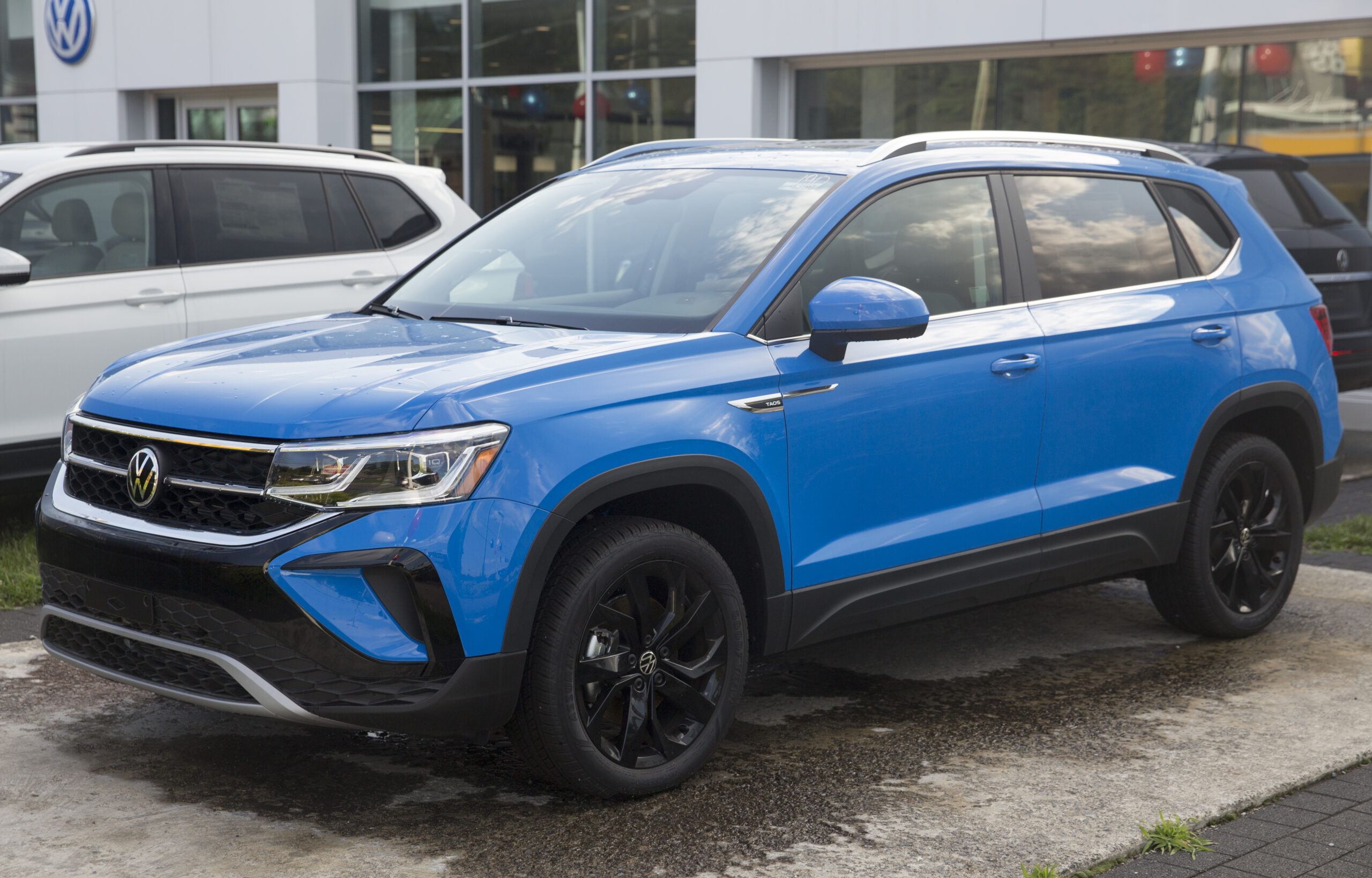
12. **Volkswagen Taos**
The Volkswagen Taos, while offering an attractive package in the compact SUV segment, may not be the ideal choice for consumers prioritizing long-term reliability and minimal maintenance. Beneath its appealing exterior lies a 1.5-liter turbocharged engine that, despite its fuel-efficient design, has become a source of considerable concern for owners and automotive experts alike, frequently showcasing issues that can lead to significant financial strain.
The primary concern centers on this turbocharged powerplant, which is known for problems such as leaks, fuel system issues, and, in some dire cases, complete engine failure. These are not minor glitches but fundamental mechanical shortcomings that can incapacitate the vehicle. Furthermore, the Taos has a documented history of electrical issues, which, as many owners can attest, tend to become ‘very expensive past the warranty,’ transforming seemingly small problems into costly diagnostic and repair nightmares.
Adding another layer of complexity, all-wheel-drive Taos models are equipped with a sophisticated dual-clutch transmission. While offering a sporty driving experience, these transmissions are notorious for ‘jerky gear changes’ and, more critically, ‘premature failure.’ Given their intricate design, replacing a dual-clutch transmission is an exceptionally expensive endeavor, potentially costing a ‘small fortune’ and solidifying the Taos’s reputation as a vehicle that demands constant attention and significant investment well before its anticipated lifespan.
Car Model Information: 2024 Volkswagen Taos 1.5T SE
Name: Volkswagen Taos/Tharu
Manufacturer: Volkswagen
Aka: Volkswagen Tharu
Production: ubl
Assembly: ubl
Designer: Klaus Zyciora
Class: Compact crossover SUV
BodyStyle: SUV
Layout: Front-engine, front-wheel-drive,Front-engine, all-wheel-drive
Platform: Volkswagen Group MQB A1
Related: SEAT Ateca,Škoda Karoq,Jetta VS5
Engine: Petrol engine,Turbocharger,1.4 L TSI 150 I4,1.5 L TSI 160 I4,Multi-point fuel injection,2.0 L TSI 190 I4
Transmission: Manual transmission
Battery: 44.1 kWh (e-Tharu)
ElectricRange: convert
Wheelbase: 105.9 in
Abbr: on
Order: 4453 mm
Length: 175.8 in
Width: 1841 mm
Height: convert
ModelYears: 2022–present
Categories: All-wheel-drive vehicles, All Wikipedia articles written in British English, Articles with short description, CS1 Brazilian Portuguese-language sources (pt-br), CS1 Mexican Spanish-language sources (es-mx)
Summary: The Volkswagen Taos is a compact crossover SUV marketed by Volkswagen. It was first released in October 2018 as the Volkswagen Tharu in China, while the Taos was released in October 2020 as a restyled version of the Tharu for the North American, South American, and Russian markets. In the brand’s lineup, the vehicle is positioned below the Tiguan, and in South America and China above the T-Cross. It is not marketed in core European market.
The Taos is named after Taos, New Mexico. The Tharu name is derived after the eponymous Tharu people, an ethnic group indigenous to Nepal and Northern India.
Get more information about: Volkswagen Taos
Buying a high-performing used car >>>
Brand: Volkswagen Model: Taos
Price: $21,990 Mileage: 35,299 mi.
Read more about: Is the 2025 Volkswagen Atlas Cross Sport Right for You? An In-Depth Car and Driver Review

13. **Audi E-Tron Model**
Audi’s foray into the electric vehicle market with its E-Tron models, unfortunately, seems to have inherited many of the reliability challenges that plague its gasoline counterparts. While the brand is known for its sophisticated engineering, Audi’s gas vehicles are ‘generally known for being fairly unreliable and extremely complicated to repair,’ a trend that appears to extend to their electric offerings, particularly in the critical early years of ownership.
These electric versions have been ‘bugged with countless electrical problems,’ a pervasive issue given the heavy reliance on intricate electronic systems in modern EVs. Beyond mere glitches, owners have reported severe ‘coolant system issues’ and even instances of ‘engine failure’—a particularly alarming problem for an electric vehicle, which typically boasts simpler powertrains. These complex failures highlight the experimental nature of early EV technology from manufacturers still finding their footing in this rapidly evolving segment.
The consensus among experts suggests that ‘the electric E-Tron models are really no different than the first generation’ of unreliable vehicles, indicating a consistent pattern of problematic engineering. For potential buyers, this translates into a high likelihood of facing significant, complex repairs that often require specialized knowledge and can become prohibitively expensive, making the E-Tron a vehicle that demands constant attention and a generous repair budget.
Car Model Information: 2019 Audi e-tron Premium Plus
Categories: All Wikipedia articles in need of updating, All pages needing cleanup, Articles needing cleanup from September 2025, Articles with short description, CS1 German-language sources (de)
Summary: The Audi e-tron is a series of electric and hybrid cars shown by Audi from 2009 onwards. In 2012 Audi unveiled a plug-in hybrid version, the A3 Sportback e-tron, released to retail customers in Europe in August 2014, and slated for the U.S. in 2015. A decade after the unveiling of the first e-tron concept at the 2009 International Motor Show Germany, Audi’s first fully electric e-tron SUV went into production in 2019.
The name has also been used on some racing cars.
Get more information about: Audi e-tron
Buying a high-performing used car >>>
Brand: Audi Model: E-Tron
Price: $23,591 Mileage: 32,696 mi.
Read more about: The Enduring Journey: Unpacking the Profound Reasons Why Americans Are Keeping Their Cars for Two Decades and Beyond
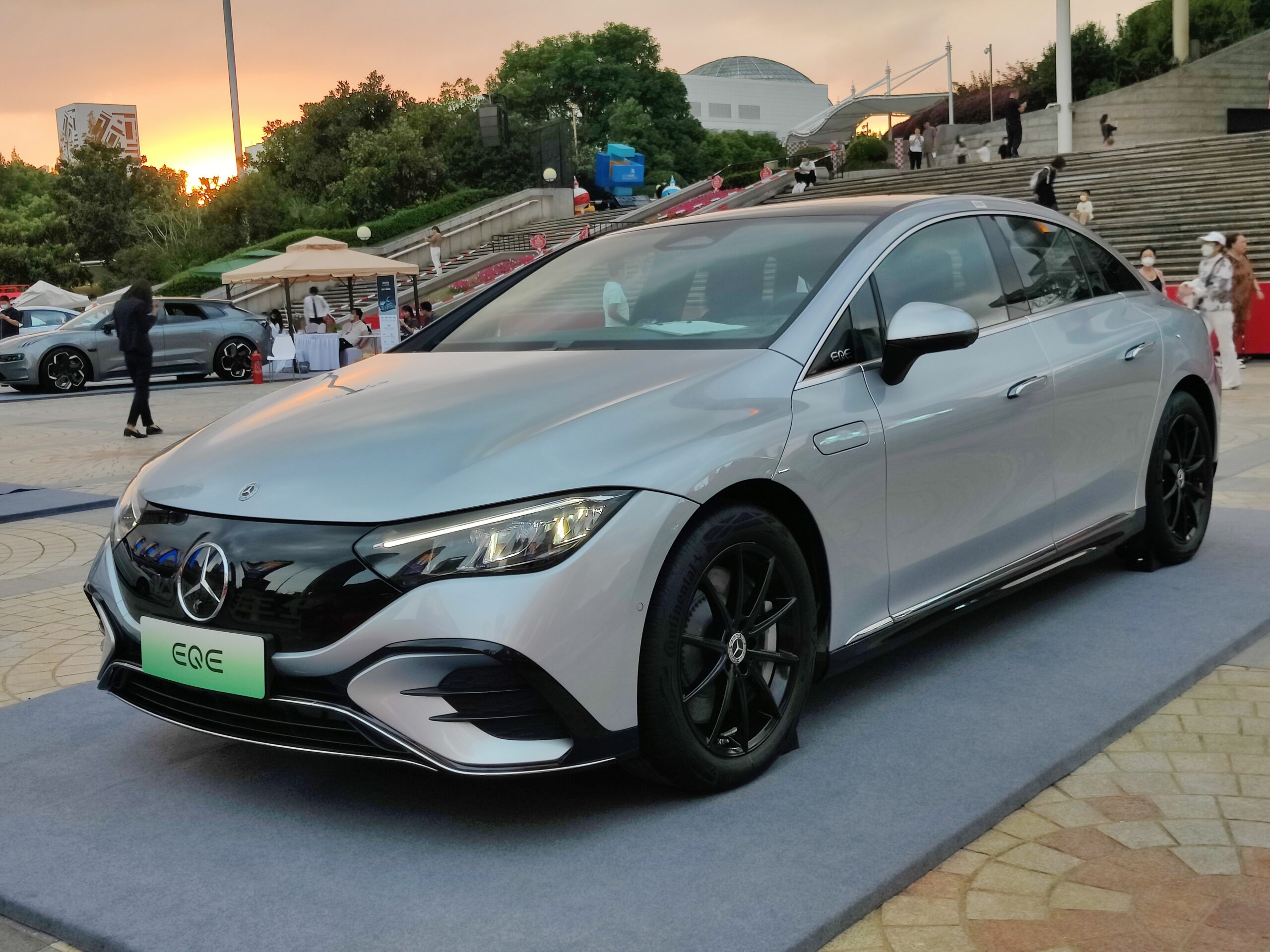
14. **Mercedes EQ**
Mercedes-Benz, a name synonymous with luxury and engineering excellence, has ventured into the electric vehicle space with its EQ models. However, these vehicles present a concerning narrative regarding long-term reliability and the economic viability of ownership. Experts point out that Mercedes’ EQ models, much like Audi’s E-Trons, are ‘relatively new and use unproven technology from a brand that doesn’t exactly have much experience building EVs but does have a lot of experience building unreliable vehicles.’
The most critical and financially crippling issues revolve around ‘high voltage battery failure and motor failure issues.’ These components are the heart of any EV, and their premature failure translates directly into astronomical repair costs. The stark reality for owners is that these repairs are ‘just too expensive to repair the minute the model is past its warranty,’ creating an economic dilemma that leaves little room for a fiscally sound solution.
This leads to a grim conclusion for these luxury electric vehicles: they ‘will be scrapped rather than repaired.’ This outcome is a stark reminder of a perceived ‘form of planned obsolescence’ where manufacturers release EVs with rapidly evolving technology, potentially without a robust plan for ‘long-term servicing and parts support.’ Ultimately, despite their initial luxury appeal, Mercedes EQ models risk becoming financially untenable liabilities for owners well before they reach significant mileage, demanding constant attention and potentially leading to an early exit from the road.
Read more about: Beyond the Showroom Shine: 15 Car Brands and Models Driving Experts Would Never Buy – And Why You Shouldn’t Either
So, there you have it: a comprehensive look at another seven vehicles that, for various reasons, demand more attention and financial outlay than most owners would prefer, often failing to reach the 60,000-mile mark without significant intervention. From luxury sedans to innovative EVs, the common thread is a lack of enduring reliability, stemming from design flaws, cost-cutting measures, or unproven technology. Choosing a vehicle is a major decision, and understanding these potential pitfalls is paramount. Arm yourself with this knowledge, prioritize thorough research, and consider consulting trusted mechanics before making your final call, ensuring your next car is a reliable partner rather than a constant source of stress and expense.



